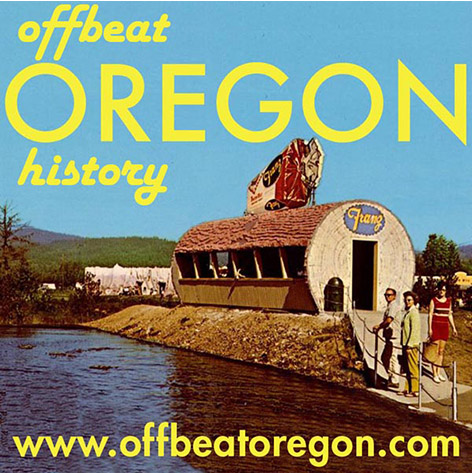
Looking for more?
On our Sortable Master Directory you can search by keywords, locations, or historical timeframes. Hover your mouse over the headlines to read the first few paragraphs (or a summary of the story) in a pop-up box.
... or ...
SALEM, MARION COUNTY; 1880s, 1890s, 1900s:
Chemawa School: An
Oregon cultural treasure
Audio version: Download MP3 or use controls below:
|

By all accounts, the kids responded to Chemawa very well. It is hard to find bitter, recriminatory accounts of time spent there, despite the fact that the first several months for a non-English-speaking six-year-old at the school must have been positively traumatic. The first students, in the 1880s, were essentially forced to go, but by the early 1900s tribal families were actually asking the boarding school to accept their children; the skills they’d learn there were much more valuable than anything they could get on the reservation, and public schools were not yet open to them (something that wouldn’t change, in some parts of the country, until 1948). The students at Chemawa were hard workers, too. Although the school started out on a few acres leased from Pacific University in Forest Grove, it was soon moved to a home of its own — a 170-acre parcel that’s part of its present campus. Then the students started working to improve their school — picking hops and beans and providing other services. They earned or fund-raised all the money that was used to expand their campus; by 1947 the students had almost tripled the size of their school grounds, bringing it to 457 acres, including a farm and a 35-acre orchard. (It was reduced to its current size by the Interstate 5 freeway project ten years later.) Celebrating Native heritageToday, Chemawa is still a boarding school, but it’s strictly a high school. This makes sense: The authorities, no longer fooling themselves into thinking it’s morally OK to brainwash other people's children, have fully embraced the wisdom of those early students, who found cultural unity and identity in the diversity of tribal backgrounds of their fellow students. It’s in high school that a young person starts thinking about the things that make him/her different and special and all that. Students in Chemawa are encouraged to take pride in their heritage and celebrate it at every opportunity. The walls of its hallways are festooned with student art in the traditions of dozens of different tribes and regions, and pow wows and other gatherings are regular events there. Thousands of kids have attended Chemawa over its 130-year run, and many have made a point of sending their own children there in turn. Alumni have rallied several times in the last century to save the school when the Bureau of Indian Affairs moved to close it. Despite the best efforts of its founders, who created it expressly to destroy Indian culture, Chemawa has done the exact opposite. Today, it is itself a cultural treasure. Ironic, isn’t it?
|
©2008-2023 by Finn J.D. John. Copyright assertion does not apply to assets that are in the public domain or are used by permission.




